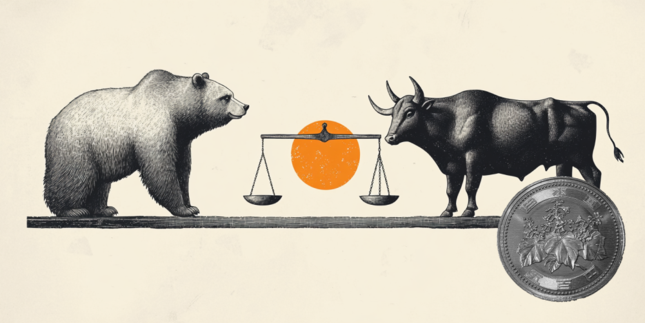USD/JPY Forecast and News
Japanese Yen consolidates near multi-month top against USD as traders await US NFP report
The Japanese Yen bulls retain control amid worries about the economic fallout from Trump’s tariffs. The risk-off mood and relatively hawkish BoJ expectations further lend support to the safe-haven JPY. The USD selling bias keeps USD/JPY close to a multi-month low ahead of the crucial US NFP release.
Latest Japanese Yen News
USD/JPY Technical Overview
From a technical perspective, the overnight break below the previous year-to-date low, around the 146.55-146.50 area, was seen as a fresh trigger for the USD/JPY bears. Moreover, oscillators on the daily chart are holding deep in negative territory and are still away from being in the oversold zone. This, in turn, suggests that the path of least resistance for spot prices remains to the downside and supports prospects for a further depreciating move. Hence, a subsequent fall below the overnight swing low, around the 145.20-145.15 region en route to the 145.00 mark and the next relevant support near the 144.50-144.45 zone, looks like a distinct possibility.
On the flip side, any attempted recovery back above the 146.50-146.55 region (the previous YTD low) is likely to attract fresh sellers and remain capped near the 147.00 round figure. A sustained strength beyond the latter, however, might trigger a short-covering rally and lift the USD/JPY pair to the 147.75-147.80 hurdle. This is closely followed by the 148.00 mark, which if cleared decisively should pave the way for additional gains towards the 148.60 intermediate barrier en route to the 149.00 mark and the 149.20 horizontal zone.
Fundamental Overview
The Japanese Yen (JPY) seesaws between tepid gains/minor losses against its American counterpart heading into the European session on Friday and remains close to a multi-month peak touched the previous day. Fears of an all-out trade war, which could trigger a global recession, continue to weigh on investors' sentiment. This is evident from a sea of red across the global equity markets and underpins the safe-haven JPY.
Furthermore, firming expectations that the Bank of Japan (BoJ) will raise interest rates further in 2025, amid signs of broadening inflation in Japan, turn out to be another factor benefiting the JPY. In contrast, the US Dollar (USD) sticks to its bearish bias amid bets that the Federal Reserve (Fed) will resume its rate-cutting cycle soon amid a tariffs-driven slowdown in the US. This, in turn, acts as a headwind for the USD/JPY pair.
Meanwhile, investors remain concerned about the potential economic fallout from US President Donald Trump's sweeping trade tariffs announced late Wednesday. This might force the BoJ to keep policy rates steady for the time being, which, in turn, holds back the JPY bulls from placing fresh bets. Furthermore, investors seem reluctant and opt to wait for the release of the US Nonfarm Payrolls (NFP) report later this Friday.
USD/JPY Big Picture
USD/JPY Bullish Themes
USD/JPY Bearish Themes
Latest JPY Analysis
Editors' picks

EUR/USD accelerates losses to 1.0930 on stronger Dollar
The US Dollar's recovery regains extra impulse sending the US Dollar Index to fresh highs and relegating EUR/USD to navigate the area of daily troughs around 1.0930 in the latter part of Friday's session.

GBP/USD plummets to four-week lows near 1.2850
The US Dollar's rebound keep gathering steam and now sends GBP/USD to the area of multi-week lows in the 1.2850 region amid the broad-based pullback in the risk-associated universe.

Japanese Yen consolidates near multi-month top against USD as traders await US NFP report
The Japanese Yen bulls retain control amid worries about the economic fallout from Trump’s tariffs. The risk-off mood and relatively hawkish BoJ expectations further lend support to the safe-haven JPY. The USD selling bias keeps USD/JPY close to a multi-month low ahead of the crucial US NFP release.

Gold trades on the back foot, flirts with $3,000
Gold prices are accelerating their daily decline, steadily approaching the critical $3,000 per troy ounce mark as the Greenback's rebound gains extra momentum and US yields tighten their retracement.

WTI tanks almost 8% as Trump tariffs stoke global economic risks
The Oil price continues to bleed as reciprocal tariffs announced by US President Trump have stoked fears of a global economic slowdown. A potential tariff war between the US and China would further deteriorate the Oil demand outlook. IMF Georgieva has urged the US and its trading partners to resolve trade issues.
Majors
Cryptocurrencies
Signatures
USD/JPY YEARLY FORECAST
How could USD/JPY move this year? Our experts make a USD/JPY update forecasting the possible moves of the yen-dollar pair during the whole year.
USD/JPY FORECAST 2025
The US Dollar could decline against some currencies but not against the Yen. Why? Because the Japanese currency is a safe-haven asset sensitive to tensions in Asia. If Sino-American tensions ease, it would likely fall. Central banks are slow movers, and the Bank of Japan – especially under Governor Kazuo Ueda – is even slower. Ueda and his colleagues are expected to drag their feet and only mention rate hikes as an effort to keep the Yen supported. Read more details about the forecast.
USD/JPY could trend up in the latter half of the year in response to more hawkish Fed policy and disillusionment with the BoJ's lack of rate hikes.
MOST INFLUENTIAL POLITICAL EVENTS IN 2025 FOR USD/JPY
Politics will likely be more dominant in 2025. The main reason is Trump’s new administration, but political instability in Japan will also play a role. In case Trump follows through with some of his threats, the Yen could benefit in two ways. First, when worries grow, it benefits, as mentioned earlier. Secondly, Japan could benefit from trade diverting away from China.
The Fed isn’t expected to raise rates in 2025, but refraining from bringing borrowing costs back to around 3% – nor intending to do so – would be enough to keep the US Dollar at an advantage over all currencies, including the safe-haven Yen. While inflation hit the shores of Japan, it is hard to see the BoJ further raising rates while the entire world is slashing them.
Influential Institutions & People for the USD/JPY
The US Dollar Japanese Yen can be seriously affected by news or the decisions taken by two main central banks:
The Federal Reserve Bank (Fed)
On the other
FED Official Website, on Twitter and Facebook
The Bank of Japan (BOJ)
The Bank of Japan is the central bank of Japan and it's a juridical person established based on the Bank of Japan Act, nor being a government agency either a private corporation. The most important missions of the BOJ are the following: to issue and manage banknotes, to implement monetary policy and to ensure stability of the financial system. Almost all of the decisions are taken by the Policy Board, formed by a bunch of members working to provide currency and monetary control and setting the next moves that the central bank will take.
BOJ Official Website and on Twitter
Jerome Powell
Jerome Powell took office as chairman of the Board of Governors of the Federal Reserve System in February 2018, for a four-year term ending in February 2022. His term as a member of the Board of Governors will expire January 31, 2028. Born in Washington D.C., he received a bachelor’s degree in politics from Princeton University in 1975 and earned a law degree from Georgetown University in 1979. Powell served as an assistant secretary and as undersecretary of the Treasury under President George H.W. Bush. He also worked as a lawyer and investment banker in New York City. From 1997 through 2005, Powell was a partner at The Carlyle Group.
Jerome Powell Fed's Profile and Wikipedia
Kazuo Ueda
Kazuo Ueda is the 32nd and current Governor of the Bank of Japan. He is a professor and the dean of the business department at Kyoritsu Women's University in Tokyo and the external director at JGC Holdings Corp, an engineering company and at the state-owned Development Bank of Japan. The 71-year-old is widely seen as an expert on monetary policy but is seen as a surprise appointment by analysts. He was not even considered a dark-horse candidate. Ueda wasn’t really on their radar because the BOJ governor job has traditionally been assumed by a long-serving Finance Ministry bureaucrat or central bank official.
Ueda on Wikipedia's Profile
BOJ NEWS & ANALYSIS
FED NEWS & ANALYSIS
About USD/JPY
The USD/JPY (or US Dollar Japanese Yen) currency pair belongs to the group of 'Majors', a way to mention the most important pairs in the world. This group also includes the following currency pairs: EUR/USD, GBP/USD, AUD/USD, USD/CHF, NZD/USD and USD/CAD. Japanese Yen has a low-interest rate and is normally used in carrying trades. This is the reason why is one of the most traded currencies worldwide. In this pair, the US Dollar is the base currency and the Japanese Yen is the counter currency. The pair represents American (from the United States of America) and Japanese economies.
Trading this currency pair is also known as trading the "ninja" or the "gopher", although this last name is more frequently used when referred to the GBP/JPY currency pair. The US Dollar Japanese Yen usually has a positive correlation with the following two pairs: USD/CHF and USD/CAD. The nature of this correlation is due to the fact that both currency pairs also use the US Dollar as the base currency. The value of the pair tends to be affected when the two main central banks of each country, the Bank of Japan (BoJ) and the Federal Reserve Bank (Fed), face serious interest rate differential.
Related pairs
GBP/USD
The GBP/USD (or Pound Dollar) currency pair belongs to the group of 'Majors', a way to mention the most important pairs worldwide. This group also includes the following currency pairs: EUR/USD, USD/JPY, AUD/USD, USD/CHF, NZD/USD and USD/CAD. The pair is also called 'The Cable', referring to the first Transatlantic cable that was crossing the Atlantic Ocean in order to connect Great Britain with the United States of America. This term was originated in the mid-19th century and it makes GBP/USD one of the oldest currency pairs in the world.
The popularity of the Pound Dollar is due to the fact that represents two strong economies: British and American (from the United States of America). The Cable is a closely watched and widely traded currency pair where the Pound is the base currency and the US Dollar is the counter currency. For that reason, all the macroeconomic data related to the United States and the United Kingdom affects the price of this pair. One of the events which affected most the volatility of the pound vs. dollar was Brexit.
EUR/USD
The EUR/USD (or Euro Dollar) currency pair belongs to the group of 'Majors', a way to mention the most important pairs in the world. This group also includes the following currency pairs: GBP/USD, USD/JPY, AUD/USD, USD/CHF, NZD/USD and USD/CAD. The popularity of Euro Dollar is due to the fact that it gathers two main economies: the European and American (from United States of America) ones. This is a widely traded currency pair where the Euro is the base currency and the US Dollar is the counter currency. Since the EUR/USD pair consists of more than half of all the trading volume worldwide in the Forex Market, it is almost impossible for a gap to appear, let alone a consequent breakaway gap in the opposite direction.
Normally, the EUR/USD is very quiet during the Asian session because economic data that affects the fundamentals of those currencies is released in either the European or U.S. session. Once traders in Europe get to their desks a flurry of activity hits the tape as they start filling customer orders and jockey for positions. At noon activity slows down as traders step out for lunch and then picks back up again as the U.S. comes online.